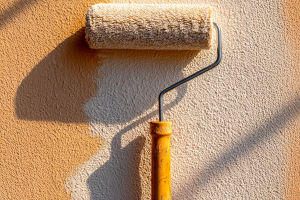Sunscreen Science
We all know that sunscreen is an essential part of our skincare routine, but how much do we really understand about what goes into it? And more importantly, have you ever wondered why sun protection standards and recommendations vary across countries?
It turns out that sunscreen is not just a one-size-fits-all product.
The sun's ultraviolet (UV) rays, which are responsible for sunburns and long-term skin damage, differ in strength depending on where you are in the world. Let's take a deeper dive into how UVA and UVB rays work, why different countries have different sunscreen standards, and how we can protect our skin more effectively.
Understanding UVA and UVB: What's the Difference?
Before we talk about sunscreen, let's first clarify the two main types of ultraviolet radiation—UVA and UVB.
UVA Rays:
These rays have a longer wavelength and can absorb deeper into the skin. They are responsible for premature aging, such as wrinkles, age spots, and the breakdown of collagen. Importantly, UVA rays can also contribute to the risk of skin cancer over time, as they can damage the DNA in skin cells.
UVB Rays:
UVB rays are shorter in wavelength and are the primary cause of sunburn. They are more intense than UVA rays but don't absorb the skin as deeply. However, they can still damage the outer layers of the skin and cause immediate skin reactions like redness and irritation. UVB rays are also linked to a higher risk of developing skin cancer, especially if there's frequent, unprotected exposure.
Both UVA and UVB rays are harmful, but they affect our skin in different ways, which is why sunscreen formulas often try to protect against both types of rays.
Why Do Sunscreen Standards Differ Across Countries?
One of the most interesting aspects of sun protection is how different countries set their sunscreen standards. You may have noticed that sunscreen packaging in different regions uses varying systems to measure sun protection. For instance, in the U.S., sunscreen effectiveness is rated by SPF (Sun Protection Factor), while in Europe and Japan, you might also see PA (Protection Grade of UVA) and UVA stars on the label. So, why the difference?
U.S. and SPF Ratings:
In the United States, the SPF system focuses mostly on UVB protection. SPF values range from 15 to 100+, and they indicate the amount of time you can stay in the sun without burning compared to if you weren't wearing sunscreen. For example, if you wear SPF 30, you can theoretically stay in the sun 30 times longer than if you weren't using any protection. However, the SPF system doesn't measure UVA protection, which can leave consumers vulnerable to the long-term effects of UVA exposure.
Europe and PA Ratings:
In Europe and Japan, sunscreen products typically use both SPF (for UVB protection) and PA (for UVA protection). PA ratings are denoted with plus signs (PA+, PA++, PA+++, etc.), indicating the level of UVA protection. This helps ensure that consumers are protected from both UVA and UVB rays, but it can make the shopping process a bit more complicated if you're used to only looking at SPF.
Japan's Comprehensive Approach:
In Japan, sunscreens are typically formulated with a strong focus on both UVA and UVB protection. Japanese sunscreens often use higher protection levels against UVA rays than Western sunscreens, which is why many people find Japanese products to be lightweight, non-greasy, and effective. Additionally, the Japanese government has strict regulations for sunscreen labeling, ensuring clear communication about the level of protection offered.
How Does UV Strength Vary Across Regions?
Now that we understand the different sunscreen standards, let's talk about why the strength of UV rays differs depending on where you live. The intensity of UV radiation depends on several factors:
1. Geographical Location:
UV rays are stronger closer to the equator, where the sun is more direct. For example, if you live in a tropical region like Southeast Asia or Australia, the UV radiation is much more intense compared to northern regions like Scandinavia or Canada. This is one reason why people living in places like Australia are so vigilant about sun protection—they are at higher risk of exposure to harmful UV rays.
2. Altitude:
UV radiation is stronger at higher altitudes. If you live in mountainous areas, the sun's rays are more direct, even during winter months. Ski resorts, for instance, have higher UV levels, which is why sunscreen is recommended even in snowy environments.
3. Season and Time of Day:
UV intensity varies throughout the year, with peak exposure during summer months. The time of day also plays a role, with UV rays being strongest between 10 a.m. and 4 p.m. This is why, regardless of where you live, it's crucial to reapply sunscreen regularly during peak sunlight hours.
How to Choose the Right Sunscreen for Your Skin
Now that we've covered the science behind UV rays and sunscreen standards, it's time to focus on how we can choose the right sunscreen. With so many products on the market, it can be overwhelming to figure out what's best for our skin. Here are a few tips:
• Broad Spectrum Protection:
Look for sunscreens labeled as "broad spectrum," which means they protect against both UVA and UVB rays. This ensures you're covering all bases and protecting your skin from both immediate sunburn and long-term aging and cancer risks.
• SPF 30 or Higher:
Dermatologists recommend using a sunscreen with at least SPF 30 for daily use. If you plan to spend extended time outdoors, aim for SPF 50+ for maximum protection.
• Water Resistance:
If you're swimming or sweating, choose a water-resistant sunscreen. However, remember that no sunscreen is completely waterproof, so reapply after swimming or heavy sweating.
Conclusion: Protect Your Skin, No Matter Where You Are
Sunscreen is one of the most important tools we have for protecting our skin from the damaging effects of UV radiation. Whether you're in the United States, Japan, or anywhere else in the world, understanding the difference between UVA and UVB rays, as well as the varying standards for sunscreen, can help you make more informed decisions about how to protect your skin. We all deserve to enjoy the sun safely, and by understanding the science of sunscreen, we can all protect our skin more effectively.
Have you ever wondered why sunscreen products in different countries seem so different? What's your go-to sunscreen for sun protection? Share your thoughts in the comments below—we'd love to hear your sunscreen tips and experiences!
Copyright © zogu 2021 - 2025. All Right Reserved.


